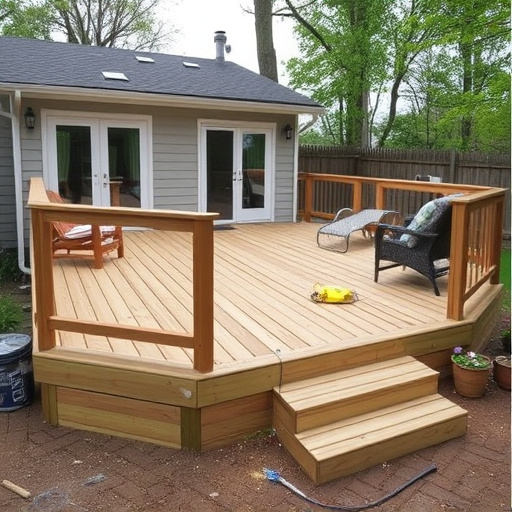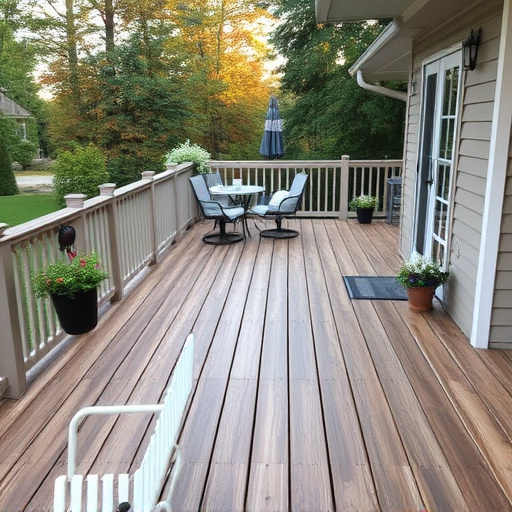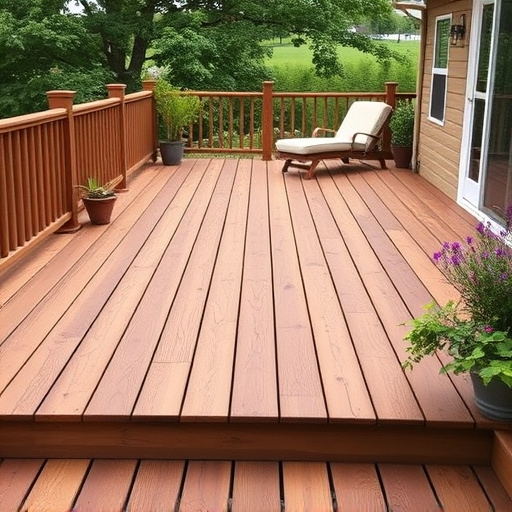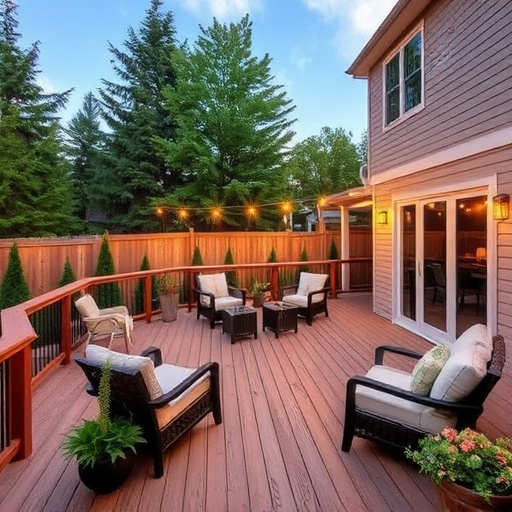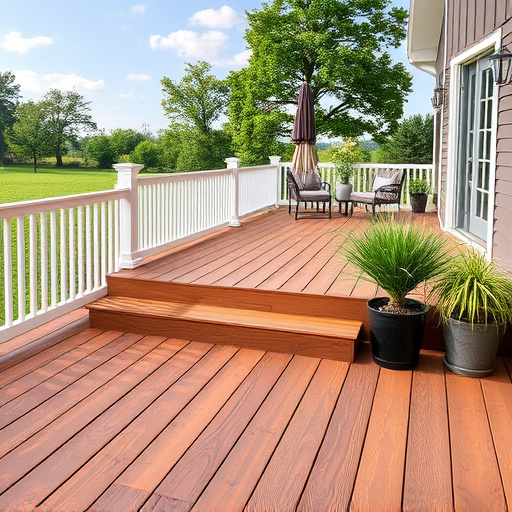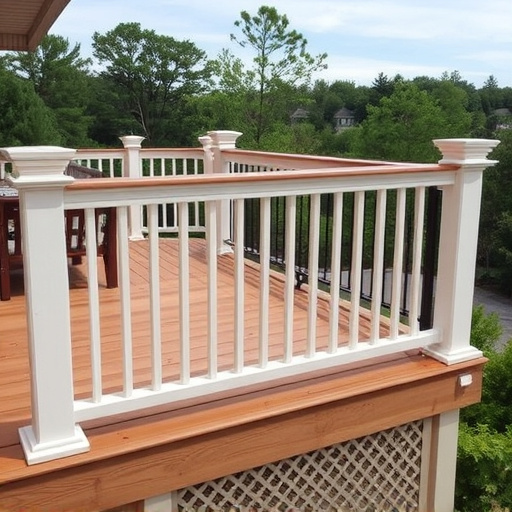For effective and long-lasting deck staining, maintain temperatures between 60°F to 85°F (15°C to 29°C) for optimal adhesion and drying. Plan projects during dry, calm weather windows in late spring/early summer to prevent issues like blotchy coats, bubbles, or cracks. Timing is crucial; avoid extreme temps and recent rainfall, stain after humid periods to ensure a durable finish that complements other exterior services.
Looking to transform your deck with vibrant, lasting color? Understanding the ideal weather conditions is key to achieving optimal results from deck staining. This comprehensive guide explores the perfect temperature range, the impact of humidity and rainfall, and the best time of year for a stunning finish. Discover how these factors intertwine to create the ideal environment for professional-grade deck staining, ensuring your investment stands the test of time.
- Understanding the Ideal Temperature for Deck Staining
- The Role of Humidity and Rainfall in Deck Staining Process
- Choosing the Right Time of Year for Optimal Deck Stain Results
Understanding the Ideal Temperature for Deck Staining
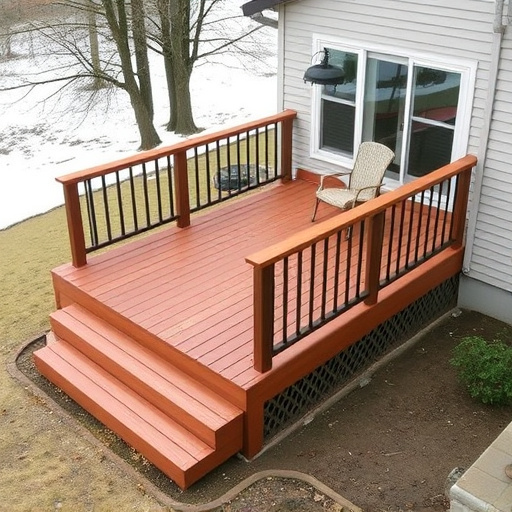
The ideal temperature for effective deck staining is typically between 60°F to 85°F (15°C to 29°C). This range ensures that the stain adheres well to the wood and provides optimal drying conditions, leading to a more durable finish. Staining at these temperatures allows for better control over the process, as both the deck and the stain are at their most cooperative. If the temperature is too cold, the stain may not cure properly, resulting in an uneven or blotchy coat. Conversely, extreme heat can cause the stain to dry too quickly, leading to bubbles, cracks, or other imperfections in the finish.
When planning a deck staining project, it’s also crucial to consider the weather conditions on the day of application. Cloudy days with minimal wind are often ideal as they provide consistent and gentle conditions that facilitate even coating. Additionally, ensuring adequate time for drying between coats is essential, so clear skies without forecast of rain or high winds are preferable. Given that many homeowners opt for roof replacement, siding replacement, or roofing and siding services to complement their deck staining, aligning these projects with the best weather conditions can enhance overall curb appeal and ensure long-lasting results.
The Role of Humidity and Rainfall in Deck Staining Process
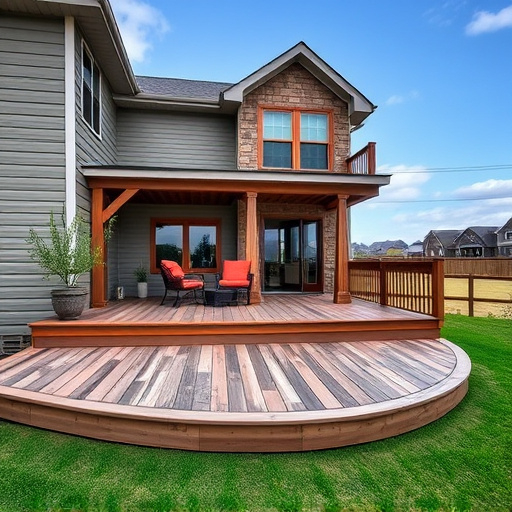
The weather plays a pivotal role in determining the success and longevity of deck staining projects. Among various factors, humidity and rainfall are key elements to consider. Optimal conditions for deck staining typically involve low humidity levels, which ensure the paint or stain dries evenly and quickly. High humidity can lead to slower drying times, potentially causing issues like blisting or uneven application.
Rainfall is another significant concern. Avoid staining decks during heavy rain or in areas prone to frequent rainfall immediately after treatment. Rain will wash away the fresh stain before it has a chance to bond properly with the wood, resulting in a less-than-satisfactory finish. It’s best to time your deck staining projects around forecasted dry periods, allowing ample time for the stain to cure fully and create a durable, protective barrier for your deck—a benefit that complements not just deck staining but also related services like roof repair and siding installation.
Choosing the Right Time of Year for Optimal Deck Stain Results
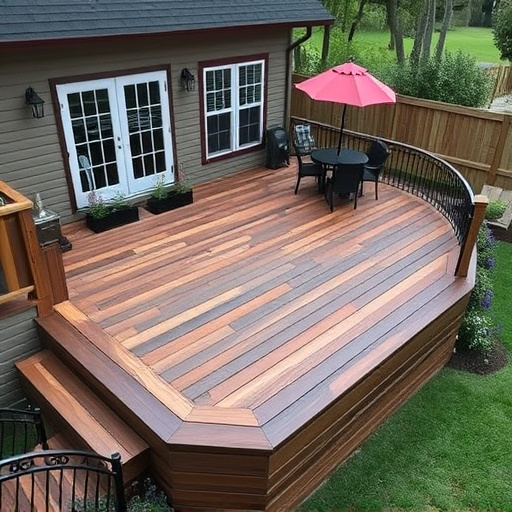
The best time to stain a deck is often considered to be late spring or early summer when weather conditions are mild and consistent. During this period, temperatures usually hover around 60-80°F (15-27°C), ideal for both application and drying of the stain. Extreme heat or cold can cause the stain to dry too quickly or not adhere properly to the deck’s surface.
Choosing the right time of year also involves considering precipitation. It’s best to avoid staining during wet or humid periods, as moisture on the deck can dilute the stain and lead to uneven application. Home exterior services professionals often recommend a 72-hour window after the last rain to ensure dry conditions. This optimal timing, coupled with proper preparation, enhances the longevity of the deck stain job, providing better value for your investment in home service solutions.
When it comes to achieving optimal results with deck staining, timing and weather play a crucial role. Ideal temperatures between 60-80°F, low humidity, and minimal rainfall ensure a smooth application process. Selecting the right time of year, typically in the late spring or early autumn, allows for the best conditions to protect your deck’s finish and enhance its beauty. By understanding these factors, you can maximize the effectiveness of your deck staining project.









